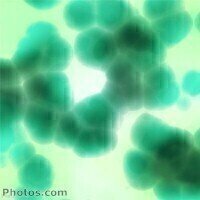-
 Biologically active substances present in E faecalis have been studied using MS
Biologically active substances present in E faecalis have been studied using MS
Bioanalytical
E faecalis analysis reveals 'landscape' of biologically active substances
Mar 02 2011
Scientists writing in BMC Genomics explain how they applied proteolytic shaving to the bacterial cells, following this by using mass spectrometry to identify the proteins present.
These biologically active substances were then examined to determine which were lipid-anchored, secreted, surface-located or cytoplasmic.
"Lipid-anchored proteins were the most dominant among the identified surface proteins," the scientists write.
Meanwhile, of the 69 unique proteins found, five were secreted, 31 surface-located and 33 cytoplasmic.
The surface and secreted proteins are particularly interesting, say the researchers, as possible avenues for future studies of E faecalis and the way in which it interacts with its surroundings.
BMC Genomics carries findings which relate to elements of both structural and functional proteomics and genomics.
In this study, the scientists involved were from the Norwegian University of Life Sciences and the University of Oslo.
Digital Edition
Chromatography Today - Buyers' Guide 2022
October 2023
In This Edition Modern & Practical Applications - Accelerating ADC Development with Mass Spectrometry - Implementing High-Resolution Ion Mobility into Peptide Mapping Workflows Chromatogr...
View all digital editions
Events
Apr 28 2024 Montreal, Quebec, Canada
May 05 2024 Seville, Spain
May 15 2024 Birmingham, UK
May 19 2024 Brno, Czech Republic
May 21 2024 Lagos, Nigeria













